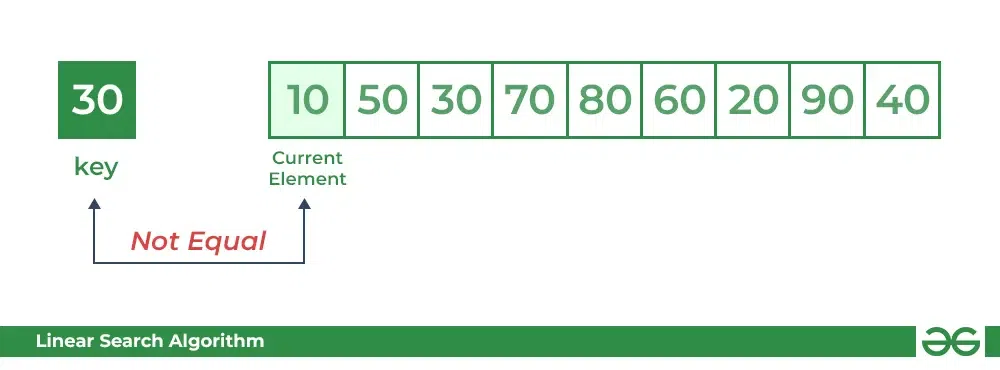单片机C语言程序设计数据结构与算法:提升代码效率的秘诀
发布时间: 2024-07-08 07:49:32 阅读量: 65 订阅数: 35 


java计算器源码.zip

# 1. 单片机C语言程序设计概述**
单片机C语言程序设计是利用C语言对单片机进行编程,实现特定功能的软件开发过程。它广泛应用于嵌入式系统、工业控制、物联网等领域。
单片机C语言程序设计具有以下特点:
* **资源受限:**单片机通常具有较小的存储空间和处理能力,需要优化代码以提高效率。
* **实时性要求:**单片机系统往往需要对事件做出快速响应,要求程序具有较高的实时性。
* **嵌入式特性:**单片机程序通常嵌入在硬件系统中,需要与硬件设备进行交互。
# 2. 数据结构与算法基础
### 2.1 数据结构的概念和分类
**2.1.1 数组、链表、栈、队列**
数据结构是组织和存储数据的方式,它决定了数据的访问和处理效率。单片机C语言中常用的数据结构包括:
- **数组:**一种线性结构,元素按顺序存储,通过索引访问。
- **链表:**一种非线性结构,元素通过指针连接,支持动态插入和删除。
- **栈:**一种后进先出(LIFO)结构,元素通过栈顶指针访问。
- **队列:**一种先进先出(FIFO)结构,元素通过队头和队尾指针访问。
### 2.2 算法的复杂度分析
**2.2.1 时间复杂度、空间复杂度**
算法的复杂度衡量其执行效率,包括时间复杂度和空间复杂度:
- **时间复杂度:**算法执行所需的时间,通常用大O符号表示,如O(n)、O(n^2)。
- **空间复杂度:**算法执行所需的空间,通常也用大O符号表示,如O(1)、O(n)。
### 2.2.2 算法效率优化
优化算法效率的方法包括:
- **循环展开:**将循环体中的代码复制到循环外,减少循环次数。
- **函数内联:**将函数调用替换为函数体代码,减少函数调用开销。
**代码示例:**
```c
// 循环展开
int sum = 0;
for (int i = 0; i < 10; i++) {
sum += i;
}
// 展开后的代码
int sum = 0;
sum += 0;
sum += 1;
sum += 2;
sum += 9;
```
```c
// 函数内联
int square(int x) {
return x * x;
}
// 内联后的代码
int square(int x) {
return x * x;
}
```
**逻辑分析:**
循环展开通过减少循环次数来优化时间复杂度。函数内联通过消除函数调用开销来优化时间复杂度。
# 3. 单片机C语言中数据结构的应用
### 3.1 数组在单片机中的使用
#### 3.1.1 数组的定义、初始化、访问
**定义数组**
在单片机C语言中,数组是一种连续的内存区域,用于存储相同数据类型的多个元素。数组的定义语法如下:
```c
数据类型 数组名[数组大小];
```
例如,定义一个存储10个整数的数组:
```c
int array[10];
```
**初始化数组**
数组元素可以在定义时进行初始化,也可以在定义后通过赋值操作进行初始化。
**访问数组元素**
数组元素可以通过下标访问,下标从0开始。数组元素的访问语法如下:
```c
数组名[下标]
```
例如,访问数组`array`中第5个元素:
```c
array[4];
```
### 3.2 链表在单片机中的应用
#### 3.2.1 链表的创建、插入、删除
**创建链表**
链表是一种动态数据结构,它由一组节点组成,每个节点包含数据和指向下一个节点的指针。在单片机C语言中,链表的创建需要手动分配内存并管理节点。
**插入节点**
在链表中插入节点需要修改链表结构,将新节点插入到指定位置。
**删除节点**
删除链表中的节点需要修改链表结构,将要删除的节点从链表中移除。
### 3.3 栈和队列在单片机中的应用
#### 3.3.1 栈和队列的实现、操作
**栈**
栈是一种后进先出(LIFO)的数据结构,它通过栈顶指针管理元素的进出。在单片机C语言中,栈可以通过数组或链表实现。
**队列**
队列是一种先进先出(FIFO)的数据结构,它通过队头指针和队尾指针管理元素的进出。在单片机C语言中,队列可以通过数组或链表实现。
# 4. 单片机C语言中算法的应用
在单片机系统中,算法的应用至关重要,它可以帮助优化程序性能,提高程序效率。本章将介绍排序算法、搜索算法和优化算法在单片机C语言中的应用。
### 4.1 排序算法在单片机中的应用
排序算法用于将一组数据按特定顺序排列。在单片机系统中,常用的排序算法包括冒泡排序和快速排序。
#### 4.1.1 冒泡排序
冒泡排序是一种简单的排序算法,它通过比较相邻元素并交换位置来对数据进行排序。其算法流程如下:
```mermaid
graph LR
subgraph 冒泡排序
A[i] --> A[i+1]
A[i+1] --> A[i]
A[i] --> A[i+1]
end
```
**代码块:**
```c
void bubbleSort(int arr[], int n) {
int i, j;
for (i = 0; i < n - 1; i++) {
for (j = 0; j < n - i - 1; j++) {
if (arr[j] > arr[j + 1]) {
int temp = arr[j];
arr[j] = arr[j + 1];
arr[j + 1] = temp;
}
}
}
}
```
**逻辑分析:**
* 外层循环 `for (i = 0; i < n - 1; i++)` 遍历数组元素。
* 内层循环 `for (j = 0; j < n - i - 1; j++)` 比较相邻元素。
* 如果 `arr[j]` 大于 `arr[j + 1]`,则交换两个元素。
#### 4.1.2 快速排序
快速排序是一种高效的排序算法,它通过分治法将数组划分为较小的子数组并递归排序。其算法流程如下:
```mermaid
graph LR
subgraph 快速排序
A[i] --> A[j]
A[j] --> A[i]
A[i] --> A[j]
end
```
**代码块:**
```c
void quickSort(int arr[], int low, int high) {
if (low < high) {
int pivot = partition(arr, low, high);
quickSort(arr, low, pivot - 1);
quickSort(arr, pivot + 1, high);
}
}
int partition(int arr[], int low, int high) {
int pivot = arr[high];
int i = (low - 1);
for (int j = low; j <= high - 1; j++) {
if (arr[j] < pivot) {
i++;
int temp = arr[i];
arr[i] = arr[j];
arr[j] = temp;
}
}
int temp = arr[i + 1];
arr[i + 1] = arr[high];
arr[high] = temp;
return (i + 1);
}
```
**逻辑分析:**
* `partition` 函数将数组划分为两部分,一部分包含小于基准值(`pivot`)的元素,另一部分包含大于基准值的元素。
* `quickSort` 函数递归地对两个子数组进行排序。
### 4.2 搜索算法在单片机中的应用
搜索算法用于在数据集中查找特定元素。在单片机系统中,常用的搜索算法包括顺序搜索和二分搜索。
#### 4.2.1 顺序搜索
顺序搜索是一种简单的搜索算法,它通过逐个比较元素来查找特定元素。其算法流程如下:
```mermaid
graph LR
subgraph 顺序搜索
A[i] --> A[i+1]
A[i+1] --> A[i]
A[i] --> A[i+1]
end
```
**代码块:**
```c
int linearSearch(int arr[], int n, int key) {
for (int i = 0; i < n; i++) {
if (arr[i] == key) {
return i;
}
}
return -1;
}
```
**逻辑分析:**
* 循环遍历数组元素,比较每个元素是否等于 `key`。
* 如果找到 `key`,则返回其索引。
* 如果没有找到 `key`,则返回 -1。
#### 4.2.2 二分搜索
二分搜索是一种高效的搜索算法,它通过将数据分成两半并递归搜索来查找特定元素。其算法流程如下:
```mermaid
graph LR
subgraph 二分搜索
A[i] --> A[j]
A[j] --> A[i]
A[i] --> A[j]
end
```
**代码块:**
```c
int binarySearch(int arr[], int n, int key) {
int low = 0;
int high = n - 1;
while (low <= high) {
int mid = (low + high) / 2;
if (arr[mid] == key) {
return mid;
} else if (arr[mid] < key) {
low = mid + 1;
} else {
high = mid - 1;
}
}
return -1;
}
```
**逻辑分析:**
* 初始化 `low` 和 `high` 变量,表示数组的范围。
* 在循环中,计算中间索引 `mid`。
* 如果 `arr[mid]` 等于 `key`,则返回 `mid`。
* 如果 `arr[mid]` 小于 `key`,则将 `low` 更新为 `mid + 1`。
* 如果 `arr[mid]` 大于 `key`,则将 `high` 更新为 `mid - 1`。
* 如果循环结束时没有找到 `key`,则返回 -1。
### 4.3 优化算法在单片机中的应用
优化算法用于提高算法的效率和性能。在单片机系统中,常用的优化算法包括循环展开和函数内联。
#### 4.3.1 循环展开
循环展开是一种优化技术,它将循环体中的代码复制到循环之外。这可以减少循环开销,提高性能。
**代码块:**
```c
// 循环展开前
for (int i = 0; i < n; i++) {
a[i] = b[i] + c[i];
}
// 循环展开后
a[0] = b[0] + c[0];
a[1] = b[1] + c[1];
a[2] = b[2] + c[2];
a[n-1] = b[n-1] + c[n-1];
```
**逻辑分析:**
* 将循环体中的代码复制到循环之外。
* 减少了循环开销,提高了性能。
#### 4.3.2 函数内联
函数内联是一种优化技术,它将函数调用直接替换为函数体。这可以减少函数调用开销,提高性能。
**代码块:**
```c
// 函数内联前
int sum(int a, int b) {
return a + b;
}
int main() {
int x = sum(1, 2);
}
// 函数内联后
int main() {
int x = 1 + 2;
}
```
**逻辑分析:**
* 将函数调用替换为函数体。
* 减少了函数调用开销,提高了性能。
# 5. 单片机C语言程序设计实践**
**5.1 基于数据结构和算法的单片机程序设计**
**5.1.1 数据采集与处理**
数据采集是单片机系统中常见的任务,需要使用适当的数据结构和算法来实现。
**数据采集方法:**
- **模拟信号采集:**使用ADC将模拟信号转换为数字信号。
- **数字信号采集:**使用GPIO或中断直接读取数字信号。
**数据结构:**
- **数组:**存储采集到的数据,方便后续处理。
- **链表:**存储不规则数据,如传感器读数。
**算法:**
- **平均值计算:**使用数组存储数据,计算数组元素的平均值。
- **最大值/最小值查找:**使用链表存储数据,遍历链表查找最大值或最小值。
- **数据过滤:**使用移动平均或卡尔曼滤波器等算法过滤噪声。
**5.1.2 控制系统设计**
单片机广泛用于控制系统中,需要使用数据结构和算法来实现控制逻辑。
**控制算法:**
- **PID控制:**使用比例、积分、微分算法调节输出。
- **模糊控制:**使用模糊逻辑规则实现控制。
- **神经网络控制:**使用神经网络模型实现自适应控制。
**数据结构:**
- **状态机:**存储控制系统的状态,根据输入触发状态转换。
- **队列:**存储控制指令,按先进先出原则执行。
**示例代码:**
```c
// 数据采集和处理
uint16_t adc_data[100];
float avg_adc_data;
void adc_init() {
// ADC初始化代码
}
void adc_data_collect() {
for (int i = 0; i < 100; i++) {
adc_data[i] = ADC_Read();
}
}
void adc_data_process() {
avg_adc_data = 0;
for (int i = 0; i < 100; i++) {
avg_adc_data += adc_data[i];
}
avg_adc_data /= 100;
}
// 控制系统设计
enum state {
STATE_INIT,
STATE_RUN,
STATE_STOP
};
struct queue {
uint8_t data[10];
uint8_t head;
uint8_t tail;
};
void queue_init(struct queue *q) {
q->head = 0;
q->tail = 0;
}
void queue_push(struct queue *q, uint8_t data) {
q->data[q->tail] = data;
q->tail = (q->tail + 1) % 10;
}
uint8_t queue_pop(struct queue *q) {
uint8_t data = q->data[q->head];
q->head = (q->head + 1) % 10;
return data;
}
void control_system() {
enum state current_state = STATE_INIT;
struct queue command_queue;
queue_init(&command_queue);
while (1) {
switch (current_state) {
case STATE_INIT:
// 初始化代码
break;
case STATE_RUN:
// 执行控制逻辑
break;
case STATE_STOP:
// 停止控制
break;
}
// 处理队列中的命令
while (!queue_empty(&command_queue)) {
uint8_t command = queue_pop(&command_queue);
switch (command) {
case CMD_START:
current_state = STATE_RUN;
break;
case CMD_STOP:
current_state = STATE_STOP;
break;
}
}
}
}
```
0
0





